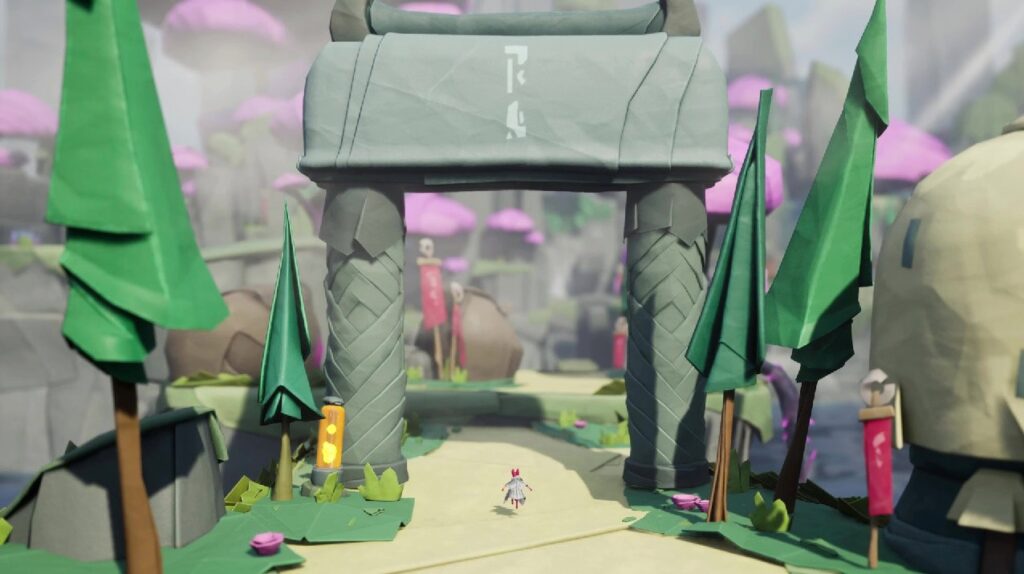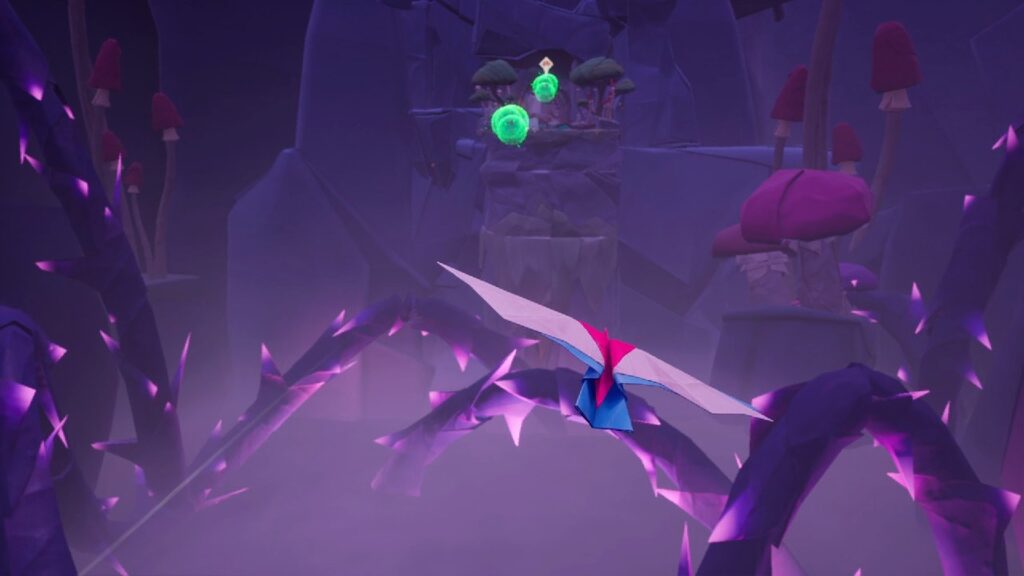As an indie game enthusiast, I can’t help but feel curious when I see a small team attempting an ambitious project. Unfortunately, not every attempt is successful. Hirogami shows us that, while the concept of an action platformer may seem straightforward, it’s difficult to stand out in such a well-represented genre. This is especially true if you launch at the same time as the most anticipated game of the last seven years.
Put it on paper!
On September the third, Bandai Namco Studios Singapore and Malaysia released Hirogami. This game had its roots in the Startup Challenge, an internal project in which a junior Bandai employee is given leadership of a team to develop a game within a set timeframe and budget. This is why the two studios, which mostly support Bandai Namco Japan, are now stepping to the forefront with this original 3D action-platformer concept.
In Hirogami, you play as Hiro, the titular character and a master of the art of ‘folding’. When a deadly corruption threatens his village and takes over the land, Hiro must step up and restore the world to its former state. Unfortunately, this is easier said than done because Hiro has lost his folding powers. Navigate your way through a crafted and folded world unlike any you have ever visited before.
Stylish looks
Let me start by saying one thing: Hirogami is a stylish game. The Japanese influence is clear for all to see. It starts with the papercraft world. The levels resemble dioramas and are accompanied by a soundtrack featuring traditional Japanese instruments. The main character, Hiro, can use the power of origami (hence the name) to transform into the animals he rescues from corruption. There’s an armadillo that lets you dash through levels at high speed. There’s also a frog that can jump higher and stomp the ground, and a gorilla that can use brute force on the world and on enemies. They come to life when you press the right trigger button. As you move them around, it seems as though some frames have been ‘cut’ from between the others, making their movement appear stiffer and more paper-like. Every design decision is made to make you feel like an origami king in a paper world.
Bare bones gameplay
After this stylish introduction, remember that Hirogami is, of course, a game, and it is here that its weaknesses become apparent quickly. Even if the levels are well edited, they quickly become monotonous. Platforming quickly becomes routine: You start a level, hit a wall where you need to fight some enemies, discover a platform that needs repairing with paper scraps from the area, and then repeat the process. I found the journey monotonous after just a few levels. It’s a shame, because the design of this game is beautiful and bold.
The platforming itself is also lacking in comparison to most other platformers released in recent years. Most recent games in the genre offer a variety of movement options and stunts that make travelling enjoyable. Even if there is a formula behind the levels. Take Astrobot, for example. The levels always follow a clear routine, but your character is so agile that exploring each one is great fun. Hirogami isn’t the worst offender by any means, but I feel that the moveset could be put to better use. For instance his animal transformations. Each one has signature moves that you need to combine to defeat enemies. However, each time you change form, you temporarily become a piece of paper. If you could instantly switch between two forms, combat would be faster. The same goes for platforming sections. This would make movement more fluid and allow players to make better use of the moves. Then I wouldn’t have felt at some points that I was playing a game that could have been on the Wii or PS3 a decade ago (with a less impressive visual style, of course).
Double A
After playing Hirogami, I couldn’t help but wonder where a game like this fits into our modern system. It isn’t a triple-A title with a high budget, but nor is it an indie game. Where a small, dedicated team would take their time to make a passion project with a small budget. I could sense the influence of a larger publisher over every decision made by the team. Setting a release date doesn’t always make it easy for developers to finish their project to the highest standard. I should mention that this is only speculation on my part and I know nothing about the inner workings of the Bandai Startup Challenge, but I can only assume that a big company would have this influence. What made me ponder this question the most was what happened on the day after this game was released. The release of Hollow Knight: Silksong. We had to wait seven years for the finished product of the sequel. This shows that gamers are willing to wait for a high-quality game. Since a major publisher is supporting Hirogami, it won’t struggle to gain recognition.
Wouldn’t developers want to create games that are bigger than indie games but smaller than triple-A games? The mysterious ‘double A’ that some online sources are already talking about. Only time will tell, but if you give smaller teams within a bigger company the time and resources to make a game, then perhaps we will see more games like those made by the developers behind Hirogami. I think we could get higher-fidelity games that are smaller in scope within a couple of years.
Conclusion
Hirogami is an action platformer developed by a small Bandai Namco team. It is based on the Japanese art of origami. While the artwork and soundtrack are excellent, the gameplay falls short in some regards. The levels feel monotonous and mostly repeat the same structure, and the platforming could be more fluid in and out of combat to enhance the player’s enjoyment. However, with more time and budget, I think this team could create a game that bridges the gap between indie and AAA, and I hope these developers get another chance to perfect their craft in the near future.





